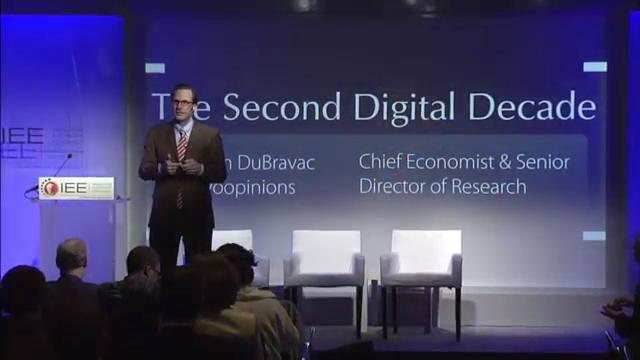Much has been written about the “death” of Microsoft’s Kin (see: here, here, and here). The focus of these analyses has centered on what might have gone wrong. I’d like to focus on something slightly different. In the death of the Kin phone I think we see something that has greater implications for technology innovation. Namely, the rate of innovation is accelerating and this puts increasing pressure on products at the intersection of success and time.
Let’s first step back in time a few years. The year is 2004. In the fourth quarter of that year, Motorola introduces the RAZR. By July 2006 it will sell over 50 million units. The Motorola RAZR would go on to sell over 110 million units before things where said and done four years after the initial launch. This record makes the RAZR one of the most successful consumer electronics products of all times and the most sold mobile phone ever (a record it still holds)….
These sales did not materialize overnight. Motorola (only) sold 750,000 units in its few months. In this early period success remains ambiguous. When Motorola and Apple launched the first iTunes-integrated phone the ROKR in 2005 they shipped an estimated 250,000 units in the first month – a similar run rate to the successful RAZR, but the ROKR ultimately failed to fulfill the hype of its launch.
With the launch of the RAZR, Motorola had a longer time horizon by which to both define and achieve success. But today, the window by which a product launch is deemed a success or failure is narrowing.
The definition of a blockbuster is increasingly becoming a function of time.
When Apple launched the iPhone 3GS in June 2009 it sold over one million units in the opening weekend. The most recent launch of the iPhone 4 saw 1.7 million units sold in the opening weekend.
Not all phone launches will need to breach these sales levels, but they will become anchoring points by which future mobile phones launches and certainly Apple products will be graded.
The simply reality is that blockbusters must be blockbusters quicker.
This phenomenon doesn’t appear to be impacting and influencing every hardware category, but it does seem to be correlated with the average life span of devices within a given hardware category. By this measure televisions with a perceived life of 10+ years are probably safe for now. But other hardware categories like computers and tablets will be increasingly measured under these terms. Mobile phones with one of the shortest life spans are most impacted.
Mobile phone manufacturers I’ve spoken with want the entire design cycle for new mobile phones – from initial thought to on the shelf – to be under nine months.
Phones are launching (and dying) quicker than ever. They are dying quicker than ever because they put at risk future, potential blockbusters.
The longer Kin stayed in the market at anything less than a blockbuster, the greater it threatened a brand-equity fragile in the mobile phone space. This is paramount prior to the major launch of Windows Phone 7. But it is applicable to anyone in the mobile phone space – and increasingly in adjacent markets like tablets, e-readers, etc.
Design cycles are shrinking and rates of innovation are accelerating. This is causing success in an era with an accelerating rate of innovation to be redefined. This phenomenon is having the greatest impact on the hardware side of these markets. On the software side developers can allow underperforming apps to remain in an app marketplace without them (1) taking-up resources of the distribution network (beyond attention of the end consumer) and (2) negatively impacting other apps by the same developer. In fact, if an underperforming app does eventually gain popularity, it has the potential to lift other apps from the same developer (see for example the story of Burstly’s Airhorn).
Leaving underperforming hardware models in the market place has the potential to impact sales of other devices from the same manufacturer. This holds for both models currently in the market as well as models forthcoming. There is a clear opportunity cost that hardware manufacturers must reconcile.
While there has been a focus on paying increasing attention to the Long Tail, the blockbuster is becoming more crucial not less on the hardware front. The window within which success must be achieved is narrowing for hardware products in categories with short design cycles.


